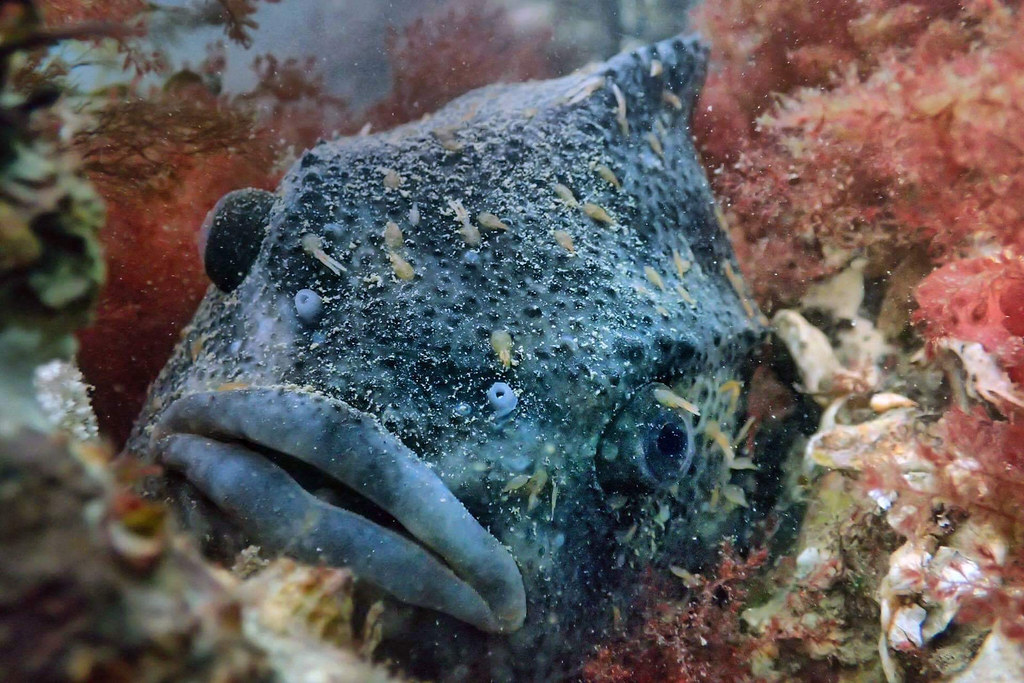Lumpfish
Cyclopterus lumpus
Lumpfish are saltwater fish, generally living in the North Atlantic but occasionally coming as far south as the Chesapeake Bay. They have a skin-covered fin that gives them a high crest on their backs, and they have three rows of bony protrusions on their sides.

